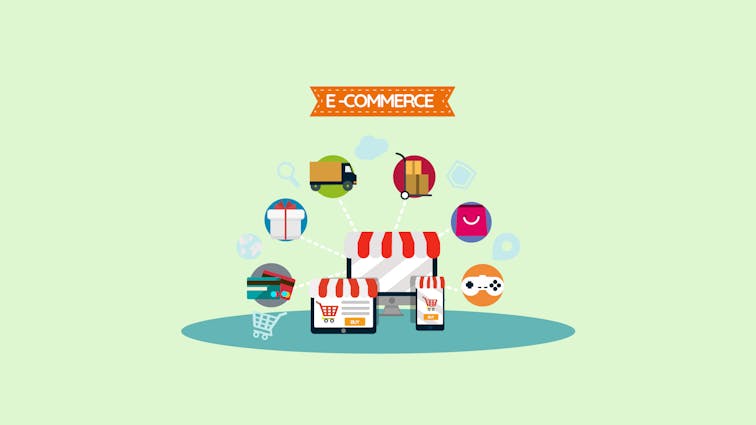
How to Build a Scalable Ecommerce Architecture
If you’re here, you’re probably aware that building an online store is more than just setting up a website and listing products.
It’s about creating a platform that can grow and adapt with your business.
And that’s where the concept of scalability comes in.
Let’s dive deeper into what scalability is and why it’s so crucial in e-commerce.
Defining Scalability and Its Importance in E-Commerce
Scalability, in the context of e-commerce, refers to the ability of your online store to handle increased levels of demand without compromising performance or user experience.
It’s like a highway that can add more lanes as traffic increases, ensuring smooth flow regardless of the number of cars.
Why is this important?
Well, imagine your online store starts to gain traction, and you’re seeing a surge in traffic and transactions.
If your e-commerce platform isn’t scalable, it could lead to slow loading times, poor user experience, and even system crashes. Not exactly the best impression for your customers, right?
On the other hand, a scalable e-commerce platform can handle this growth smoothly, ensuring your online store remains operational and efficient, no matter how much your business grows.
It’s like having a magic elastic band that expands and contracts based on your needs.
Types of Scalability: Vertical and Horizontal
When it comes to scalability, there are two main types: vertical and horizontal.
Vertical scalability, also known as “scaling up”, involves adding more resources to your existing server, such as more CPU, RAM, or storage. It’s like upgrading your car to a more powerful model.
Horizontal scalability, or “scaling out”, involves adding more servers to your system to distribute the load. It’s like adding more lanes to a highway to accommodate more cars.
Each type has its pros and cons, and the best choice depends on your specific needs and resources.
Challenges in Building a Scalable E-Commerce Architecture
Building a scalable e-commerce architecture is not a walk in the park. It’s a complex process that comes with its own set of challenges.
For starters, you need to anticipate future growth and plan accordingly, which is easier said than done. How do you prepare for something that hasn’t happened yet?
Then there’s the technical aspect. You need to choose the right technology stack, design a robust database, and implement effective load balancing techniques, among other things. And let’s not forget about security.
With cyber threats on the rise, ensuring your e-commerce platform is secure is paramount.
The Role of Cloud Computing in Scalability
Cloud computing plays a crucial role in scalability. It provides a flexible, cost-effective solution for managing growth and fluctuations in demand.
With cloud services, you can easily add or remove resources as needed, ensuring your platform remains efficient and responsive, no matter how much your business grows.
Understanding E-Commerce Architecture

Before we delve into how to build a scalable e-commerce architecture, let’s first understand what e-commerce architecture is and its key components.
Basic Components of E-Commerce Architecture
E-commerce architecture is like the backbone of your online store.
It’s made up of several components that work together to ensure your e-commerce operations run smoothly.
These components include the user interface (the look and feel of your online store), the database (where all your product information and customer data are stored).
The shopping cart (where customers can store their chosen items before checkout), and the payment gateway (which processes online payments).
Traditional vs. Modern E-Commerce Architecture
Traditionally, e-commerce architectures were monolithic, meaning all the components were interconnected and deployed as a single unit.
While this approach has its advantages, it’s not very flexible or scalable. Think of it like a single-lane highway.
It works fine when there’s not much traffic, but when the traffic increases, it can quickly become congested.
On the other hand, modern e-commerce architectures are built using a microservices approach.
This means each component is developed and deployed independently, like multiple lanes on a highway.
This approach offers greater flexibility and scalability, making it a popular choice for businesses planning for growth.
Read More: Headless Commerce vs Traditional Commerce: Which One Is Better for Your Business?
E-Commerce Platform Selection

Choosing the right e-commerce platform is a crucial step in building your online store. It’s like choosing the right location for a brick-and-mortar store.
The right platform can set you up for success, while the wrong one can create unnecessary challenges. So, how do you choose the right e-commerce platform?
Factors to Consider When Choosing an E-Commerce Platform
Choosing an e-commerce platform is not a decision to be taken lightly. It’s important to consider several factors to ensure you choose the platform that best fits your needs.
Here are some key factors to consider:
- Scalability: As we discussed earlier, scalability is crucial. You want a platform that can grow with your business.
- Ease of Use: You’ll be spending a lot of time on your e-commerce platform, so it’s important that it’s user-friendly.
- Customizability: Every business is unique, and your e-commerce platform should reflect that. Look for a platform that allows you to customize your store to fit your brand and needs.
- Features: Make a list of the features you need (like inventory management, SEO tools, or analytics), and ensure your chosen platform offers them.
- Price: Consider your budget and the pricing structure of the platform. Remember to factor in any additional costs like transaction fees or costs for add-ons.
Open-Source vs. SaaS Platforms
When choosing an e-commerce platform, one of the first decisions you’ll need to make is whether to go with an open-source or a Software as a Service (SaaS) platform.
Open-source platforms, like WooCommerce or Magento, offer high levels of customizability and control.
They’re like a DIY kit—you can build and customize your store exactly how you want it. However, they can be more complex to set up and manage, and you’re responsible for handling updates and security.
On the other hand, SaaS platforms, like Aasaan, Shopify or BigCommerce, are more user-friendly and come with hosting, updates, and security handled for you.
They’re like renting a fully-furnished apartment—you can move in and start selling right away. However, they can be less customizable and come with ongoing costs.
Comparison of Popular E-Commerce Platforms
There are many e-commerce platforms out there, each with its own strengths and weaknesses. Here’s a brief comparison of some popular ones:
- Shopify: Known for its user-friendliness, excellent customer support, and a wide range of features. However, it has less customizability and higher costs for advanced features.
- Aasaan: a no code ecommerce platform that offers ease of use, affordable pricing, and a simple drag-and-drop interface for designing your store.
- WooCommerce: Highly customizable and comes with a large community of developers. However, it can be complex to set up and requires separate hosting.
- Magento: Offers high levels of customizability and scalability, and comes with a wide range of features. However, it can be complex to use and requires a higher level of technical expertise.
- BigCommerce: Offers a good balance of customizability and ease of use, and comes with a wide range of built-in features. However, it has higher costs for higher revenue stores.
How Various Platforms Support Scalability
Different platforms support scalability in different ways. For instance, SaaS platforms like Aasaan app, Shopify and BigCommerce handle scalability for you. They automatically add resources as your store grows.
On the other hand, with open-source platforms like WooCommerce and Magento, you have more control over scalability, but you’re also responsible for managing it.
The Role of Microservices in E-Commerce Architecture

As we venture further into the realm of e-commerce architecture, it’s time to shine the spotlight on a key player that’s been making waves in recent years: microservices.
But what are microservices, and why are they so beneficial in e-commerce? Let’s find out!
What are Microservices?
Picture a bustling city. It’s made up of various districts, each with its own unique function, yet all working together to form a cohesive whole. That’s essentially what microservices are in the world of software architecture.
Microservices, also known as the microservices architecture, is an architectural style that structures an application as a collection of small, autonomous services.
Each service, or ‘microservice’, runs a unique process and communicates with the others through a well-defined, lightweight mechanism to serve a business goal.
Think of it like a team of specialists, each with their own expertise, working together to achieve a common objective.
In the context of e-commerce, you might have one microservice handling user authentication, another managing inventory, and yet another processing payments.
Each one operates independently, but they all play a crucial role in the overall operation of your online store.
Benefits of Microservices in E-Commerce
So, why are microservices such a big deal in e-commerce? Well, there are several reasons.
Firstly, microservices offer enhanced scalability. Remember our city analogy? Just as a city can expand by adding more districts, an e-commerce platform can scale by adding more microservices. This means you can easily accommodate growth and fluctuations in demand.
Secondly, microservices promote agility and speed. Since each microservice is independent, teams can develop, test, and deploy them separately. This means you can roll out new features and updates faster, keeping your online store fresh and competitive.
Lastly, microservices improve resilience. If one microservice fails, it doesn’t bring down the entire system.
It’s like if a power outage occurs in one district of a city, the rest of the city remains unaffected. This ensures your e-commerce platform remains operational, providing a seamless user experience.
Case Study: Successful Implementation of Microservices
To illustrate the power of microservices, let’s look at a real-world example: Amazon.
The retail giant was one of the early adopters of the microservices architecture. They transitioned from a monolithic architecture to a microservices architecture to handle their massive scale and complexity.
This shift allowed Amazon to scale its services to handle millions of transactions daily, roll out updates quickly, and maintain high availability, even during peak shopping periods like Black Friday and Cyber Monday.
It’s a testament to the potential of microservices in building a robust and scalable e-commerce architecture.
Building a Scalable E-Commerce Architecture
Now that we’ve laid the groundwork, it’s time to roll up our sleeves and get down to the nitty-gritty of building a scalable e-commerce architecture.
It might seem like a daunting task, but don’t worry—we’re here to guide you every step of the way!
Step-by-Step Guide to Building a Scalable E-Commerce Architecture
Building a scalable e-commerce architecture is like constructing a building. You need a solid foundation, the right materials, and a good plan. Here’s a step-by-step guide to help you get started:
- Define Your Requirements: Before you start building, you need to know what you’re building for. What’s the nature of your e-commerce business? What are your growth projections? What features do you need? Answering these questions will help you define your requirements and set clear goals.
- Choose Your Architecture Style: As we discussed earlier, the microservices architecture is a great choice for scalability. However, it’s not the only option. Depending on your needs, you might opt for a serverless architecture, a service-oriented architecture (SOA), or stick with a monolithic architecture but implement it in a scalable way.
- Design Your Database: Your database is like the brain of your e-commerce platform—it stores all your crucial data. Designing a robust database that can handle large volumes of data and provide fast, reliable access is key.
- Implement Your Services: Once you’ve designed your database, it’s time to implement your services. This could include user authentication, inventory management, payment processing, and more.
- Test and Deploy: Before you launch, make sure to thoroughly test your e-commerce platform to ensure everything works as expected. Once you’re confident in your platform’s functionality and performance, it’s time to deploy!
Choosing the Right Technology Stack
Just as a builder needs the right tools and materials, you need the right technology stack to build your e-commerce architecture.
The “right” technology stack may vary depending on your specific needs, but it generally includes a programming language, a web framework, a database system, and possibly a cloud computing provider.
For instance, you might choose JavaScript as your programming language, Express.js as your web framework, MongoDB as your database system, and AWS as your cloud provider.
This is just one example—there are many viable technology stacks out there. The key is to choose a stack that aligns with your needs, expertise, and scalability goals.
Importance of a Robust Database Design
We can’t stress enough the importance of a robust database design in a scalable e-commerce architecture.
Your database is where all your product information, customer data, and transaction data live. If your database isn’t well-designed, it could lead to slow performance, data loss, or even system crashes.
A robust database design involves careful planning and consideration. You need to think about how your data will be structured, how it will be accessed, and how it will scale as your business grows.
This might involve techniques like data normalization, indexing, and sharding.
Optimizing Ecommerce Architecture for Performance

Building a scalable e-commerce architecture is just the first step. To ensure your online store runs smoothly and efficiently, you need to optimize it for performance.
Think of it like tuning a car—you want it to run as fast and efficiently as possible, right? Let’s look at some techniques to help you do just that.
Load Balancing Techniques
Load balancing is like a traffic cop for your e-commerce platform. It distributes network traffic across multiple servers to ensure no single server becomes overwhelmed.
This helps to improve responsiveness and availability, providing a smoother user experience.
There are several load balancing techniques you can use, such as round-robin, least connections, and IP hash. The best one for you depends on your specific needs and the nature of your traffic.
Caching Strategies
Caching is like having a shortcut to your favorite coffee shop. Instead of taking the long route every time, you take a shortcut to get your coffee faster.
In e-commerce, caching stores frequently accessed data in a ‘cache’ so it can be retrieved quickly, reducing the load on your database and speeding up response times.
There are various caching strategies, such as Least Recently Used (LRU), Most Recently Used (MRU), and First In, First Out (FIFO).
The right strategy for you depends on your data access patterns and the nature of your e-commerce business.
Content Delivery Networks (CDNs)
A Content Delivery Network (CDN) is like a global network of coffee shops. Instead of everyone trying to get coffee from one shop, they can get it from the shop closest to them.
In e-commerce, a CDN stores copies of your website’s content in multiple geographical locations to deliver it faster to users, improving site speed and user experience.
Security Considerations in E-Commerce Architecture
In the world of e-commerce, security is paramount. With cyber threats on the rise, ensuring your e-commerce platform is secure is not just important—it’s essential. Let’s look at some key security considerations.
Importance of Security in E-Commerce
Security in e-commerce is like a lock on your front door—it protects your valuable assets from threats.
In the case of e-commerce, these assets include sensitive customer data and transaction information. A security breach could lead to data theft, loss of customer trust, and even legal repercussions.
Implementing SSL and HTTPS
SSL (Secure Sockets Layer) and HTTPS (Hyper Text Transfer Protocol Secure) are like the security guards of your e-commerce platform.
They encrypt the data transmitted between your website and your users, preventing unauthorized access. Implementing SSL and HTTPS is crucial for protecting sensitive data and building trust with your customers.
Data Protection and Privacy Policies
Data protection and privacy policies are like the rules and regulations of your e-commerce platform.
They outline how you collect, use, and protect your customers’ data.
Having clear and comprehensive data protection and privacy policies is crucial for complying with data protection laws and building trust with your customers.
Future Trends in Ecommerce Architecture

As we look towards the horizon, it’s clear that the world of e-commerce architecture is not standing still.
It’s evolving at a rapid pace, driven by technological advancements and changing consumer behaviors. So, what does the future hold? Let’s explore some emerging trends.
- Artificial Intelligence and Machine Learning: AI and ML are set to revolutionize e-commerce architecture. They can be used to analyze customer behavior, personalize shopping experiences, and automate various processes, among other things. Imagine an online store that learns from your shopping habits and tailors its offerings to your preferences—that’s the power of AI and ML!
- Serverless Architectures: Serverless architectures are gaining popularity in the e-commerce space. They allow developers to focus on their code without worrying about server management or capacity planning. This can lead to faster development cycles and lower operational costs.
- Headless Commerce: Headless commerce separates the front-end of an e-commerce platform from the back-end, allowing each to operate independently. This provides greater flexibility and makes it easier to implement changes or add new features.
- API-First Approach: An API-first approach involves designing APIs right at the start of a project, rather than as an afterthought. This can improve efficiency and make it easier to integrate with other systems.
- Sustainability: As consumers become more environmentally conscious, sustainability is becoming a key consideration in e-commerce. This could involve using eco-friendly hosting providers, optimizing energy use, or implementing green shipping practices.
Recap of Building a Scalable E-Commerce Architecture
Building a scalable e-commerce architecture is like embarking on a journey.
It’s a process that involves several steps, from understanding the basics of e-commerce architecture and the role of microservices, to choosing the right technology stack and designing a robust database.
Along the way, we’ve explored various techniques for optimizing performance, including load balancing, caching, and using CDNs.
We’ve also delved into the importance of security in e-commerce and discussed strategies for maintaining and scaling your e-commerce architecture.
As we look to the future, it’s clear that the world of e-commerce architecture is set to continue evolving.
By staying abreast of the latest trends and continually optimizing your e-commerce platform, you can ensure your online store remains competitive and ready to meet the demands of the future.
Remember, the key to a successful e-commerce platform is not just about having the right features—it’s about providing a seamless, secure, and enjoyable shopping experience for your customers.
So, keep your customers at the heart of your e-commerce strategy, and you’re sure to succeed. Stay tuned for more insights into the world of e-commerce architecture!
FAQ’s:
1. How do I make my ecommerce platform scalable?
Implement cloud-based solutions, use scalable databases, optimize website performance, and automate processes. Regularly monitor and adjust your system to handle increased traffic and transactions.
2. What are the three components of e-commerce architecture?
The three components of e-commerce architecture are the User Interface, Middleware, and Database. The User Interface interacts with users, Middleware processes business logic, and the Database stores data.
3. What are the key components of e-commerce architecture?
Key components include User Interface, Middleware, Database, Shopping Cart, Payment Gateway, and Security. These components ensure smooth user interaction, data processing, transaction handling, and secure operations.
4. What is scalable e-commerce?
Scalable e-commerce refers to the ability of an e-commerce platform to handle increased traffic, transactions, and data without compromising performance or user experience.
5. How do you scale ecommerce?
To scale ecommerce, optimize website performance, automate processes, use scalable databases, implement cloud solutions, and regularly monitor and adjust your system to handle increased demand.








